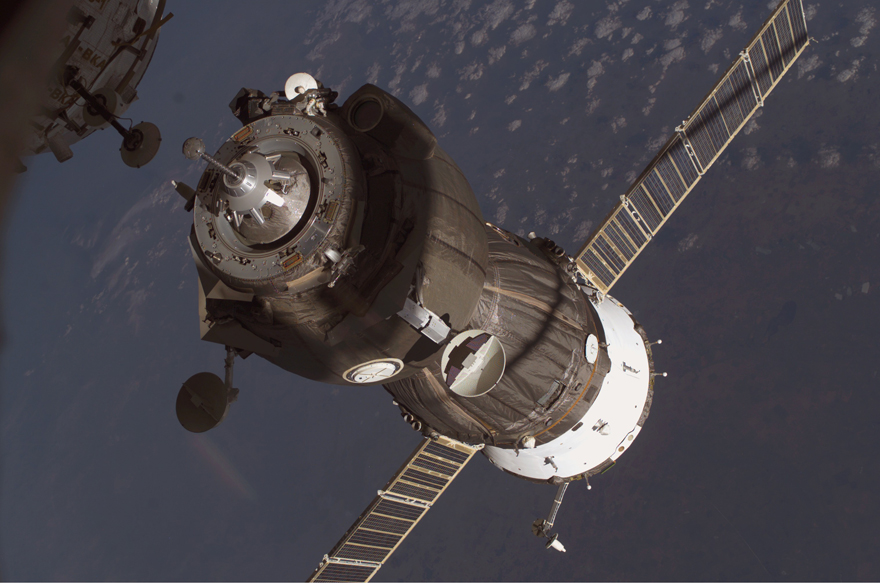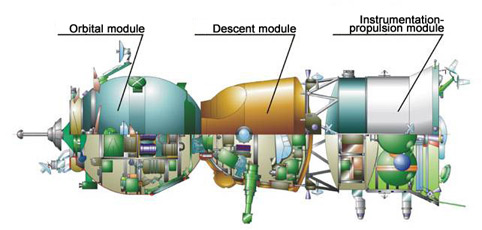The Soyuz spacecraft
The Soyuz ("union" in Russian) is currently one of the few spacecraft that can fly humans to the International Space Station (ISS).
The Soyuz is also used as a rescue vehicle in case of an emergency on the ISS. Each Soyuz rocket is designed for one return flight, and is never used again. It can accommodate a crew of two to three people.
Canadian Space Agency (CSA) astronauts and the Soyuz spacecraft
- Robert Thirsk, Expedition 20/21,
- Chris Hadfield, Expedition 34/35, –
- David Saint-Jacques, Expedition 58/59, -
Other CSA astronauts who have travelled in space did so on board a space shuttle.

Credit: NASA
Three primary uses of the Soyuz
- Crew rotation: One crew is delivered to the Space Station on a Soyuz, and the previous crew returns to Earth on another Soyuz.
- Rescue vehicle: It can be used as a lifeboat in the unlikely event that the crew is forced to evacuate the ISS. This rescue vehicle must be replaced every six months.
- Carrying provisions and payloads: The spacecraft can carry up to 250 kg of cargo.
Soyuz modules
The spacecraft consists of three modules.

1. Orbital Module
This is where crewmembers enter and exit the Soyuz during dock phase on the ISS. After undocking, the Orbital Module separates from the Descent Module (capsule) and burns up upon re-entry.
This module contains:
- life support system and equipment (water, food, toilet)
- rendezvous and docking systems
- vehicle system automatic equipment
- a camera
2. Descent Module (capsule)
Crew members sit in a reclining position in the vehicle during ascent, orbital manoeuvres (approach and docking) and atmospheric re-entry.
This module contains:
- more life support equipment
- autonomous control systems and instrumentation (command panel)
- atmospheric re-entry control system
- a re-entry heat shield since it is designed to bring the crew back to Earth
3. Instrumentation/Propulsion Module
This part of the spacecraft separates from the Descent Module after undocking from the Space Station and, like the Orbital Module, burns up in the atmosphere upon re-entry.
This module contains:
- oxygen tanks
- electrical and thermal control systems
- onboard computers
- thrusters
- infrared sensors
- external radiators
- solar panels